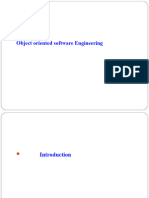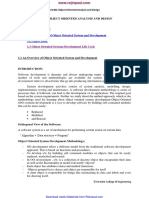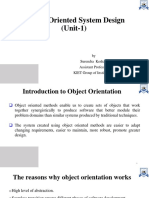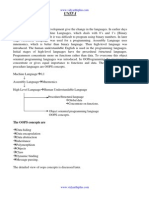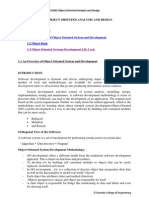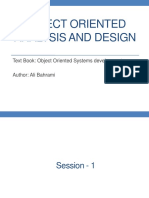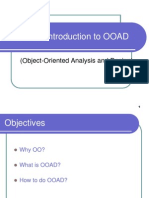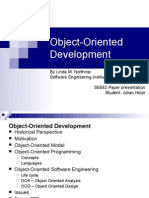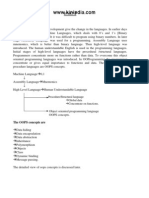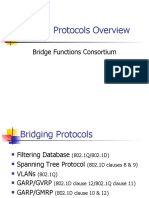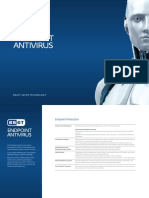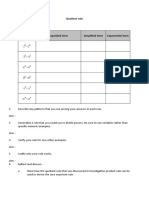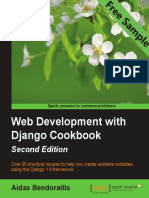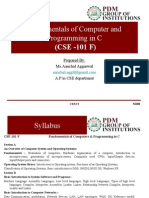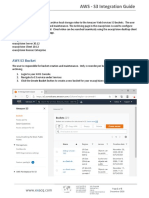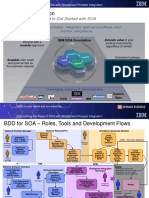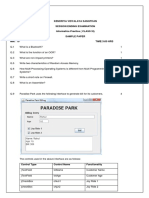0% found this document useful (0 votes)
82 views12 pagesIntroduction To Object-Oriented Methodology
The document introduces object-oriented methodology, including the software crisis as motivation. It contrasts conventional and object-oriented design approaches using an air traffic control example. The key concepts of object-oriented programming like classes, objects, encapsulation, inheritance and polymorphism are defined. Finally, it discusses what makes a good system, noting that object-oriented methods may help address issues like flexibility and maintenance.
Uploaded by
Srikanth AddepalliCopyright
© Attribution Non-Commercial (BY-NC)
We take content rights seriously. If you suspect this is your content, claim it here.
Available Formats
Download as PDF, TXT or read online on Scribd
0% found this document useful (0 votes)
82 views12 pagesIntroduction To Object-Oriented Methodology
The document introduces object-oriented methodology, including the software crisis as motivation. It contrasts conventional and object-oriented design approaches using an air traffic control example. The key concepts of object-oriented programming like classes, objects, encapsulation, inheritance and polymorphism are defined. Finally, it discusses what makes a good system, noting that object-oriented methods may help address issues like flexibility and maintenance.
Uploaded by
Srikanth AddepalliCopyright
© Attribution Non-Commercial (BY-NC)
We take content rights seriously. If you suspect this is your content, claim it here.
Available Formats
Download as PDF, TXT or read online on Scribd
/ 12










